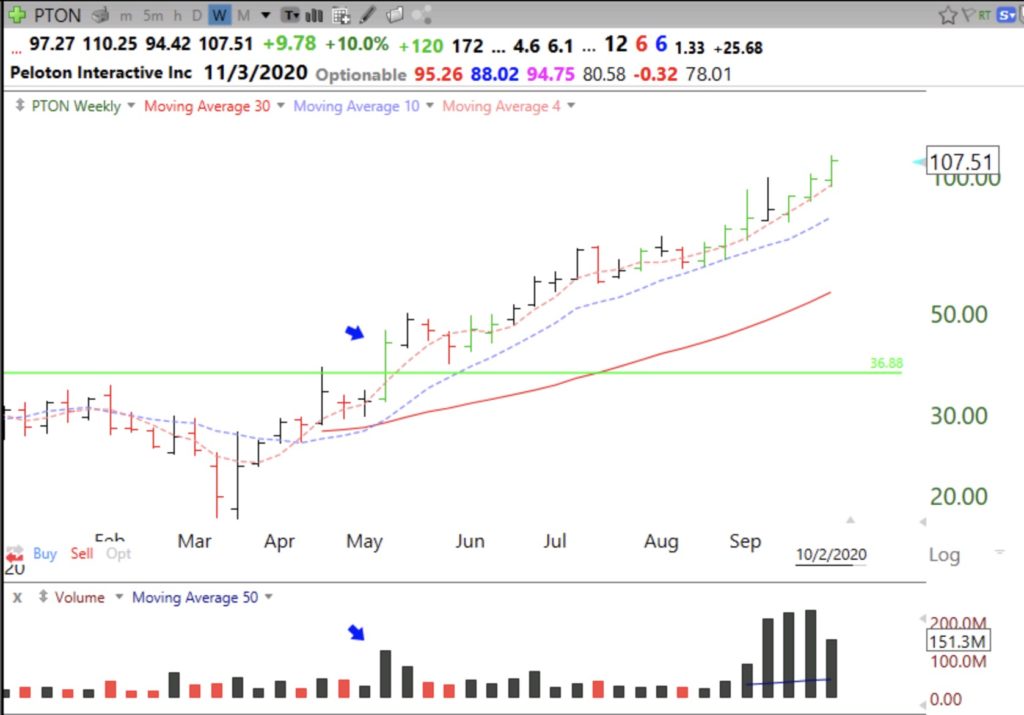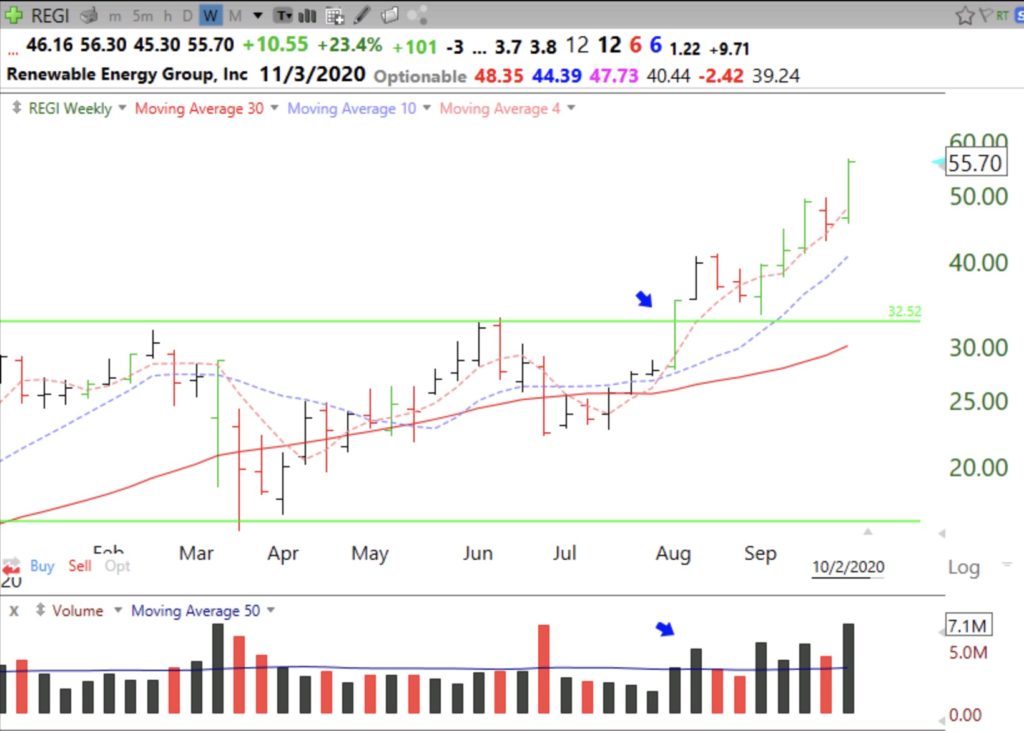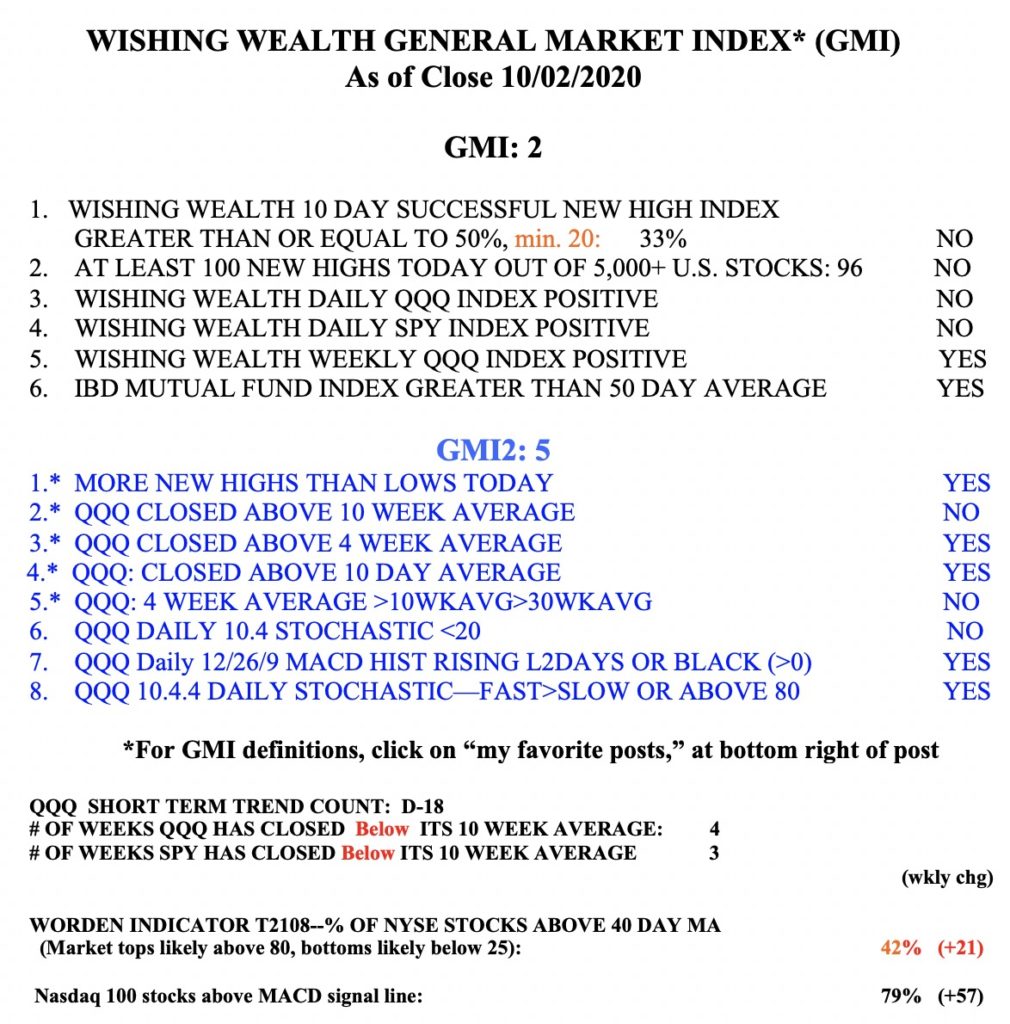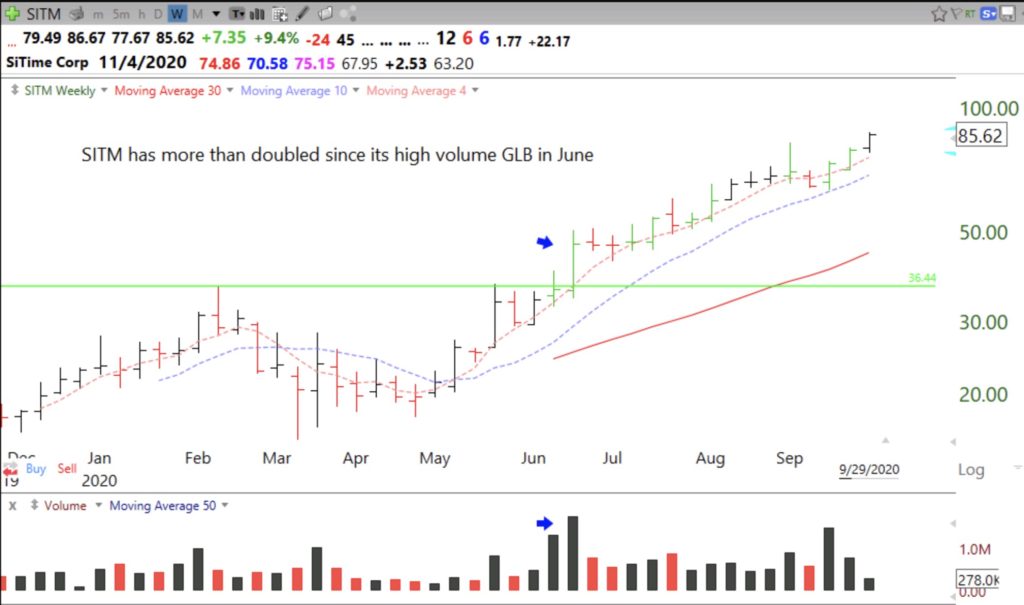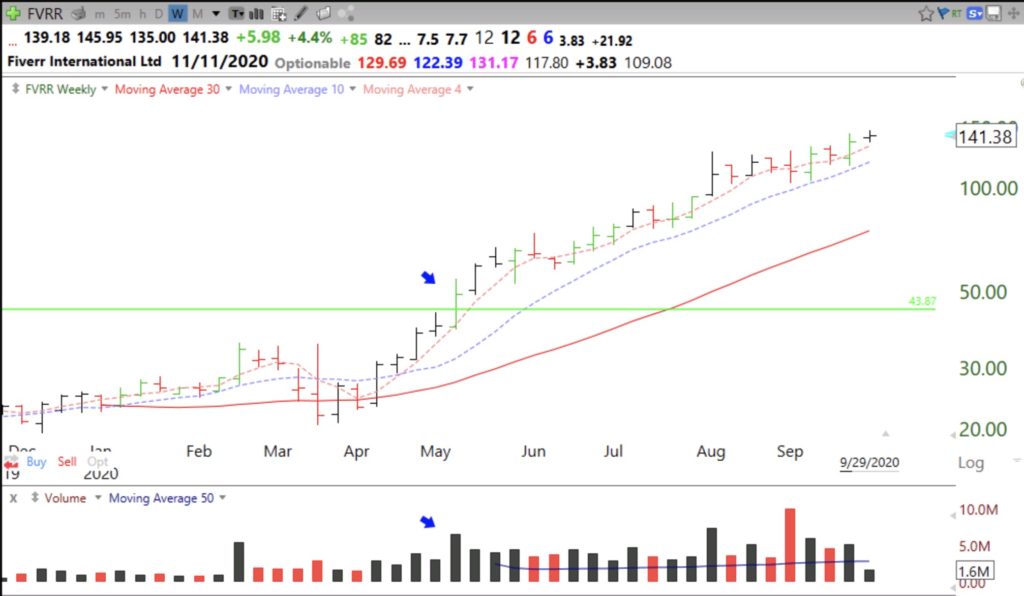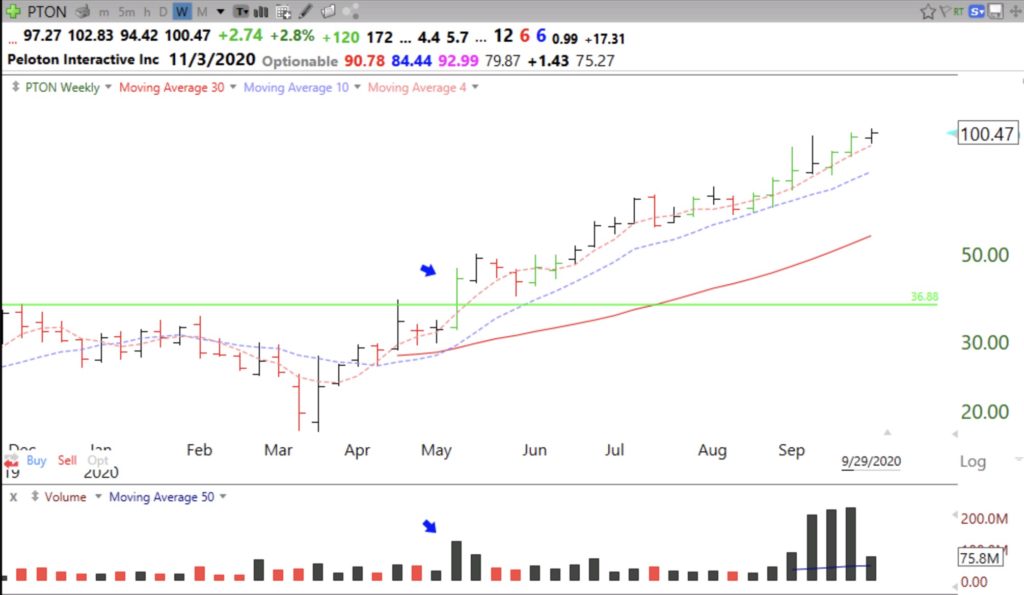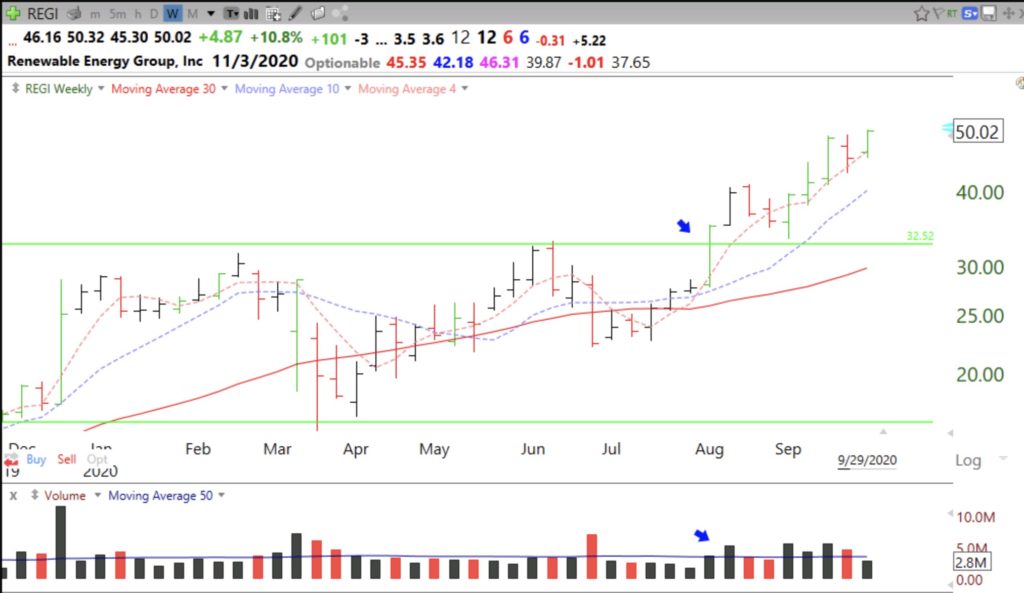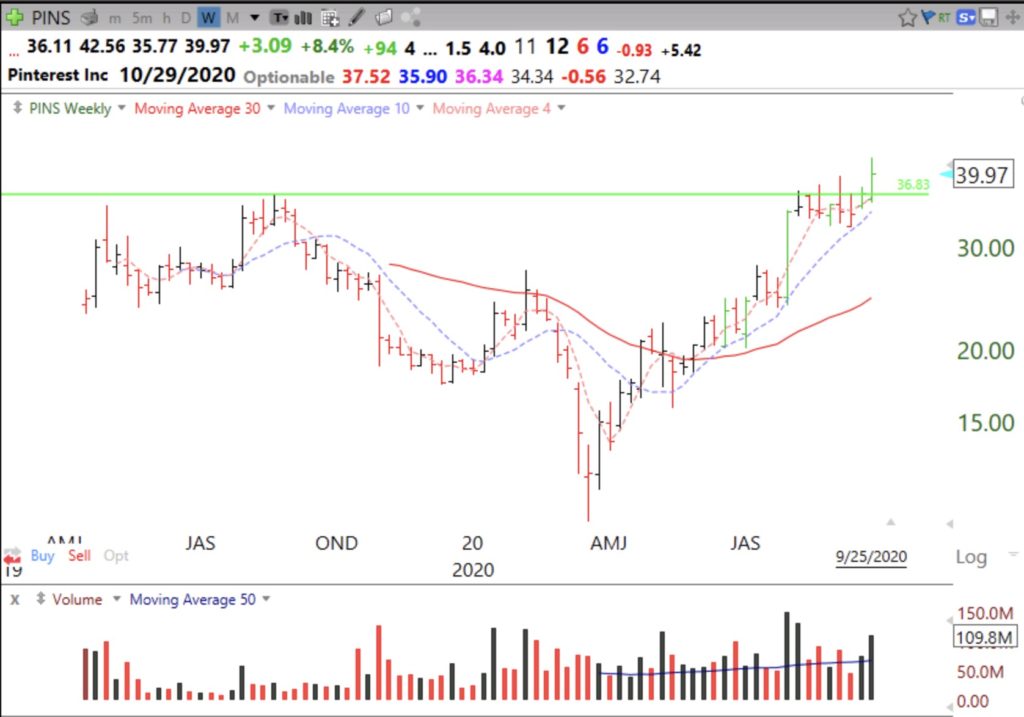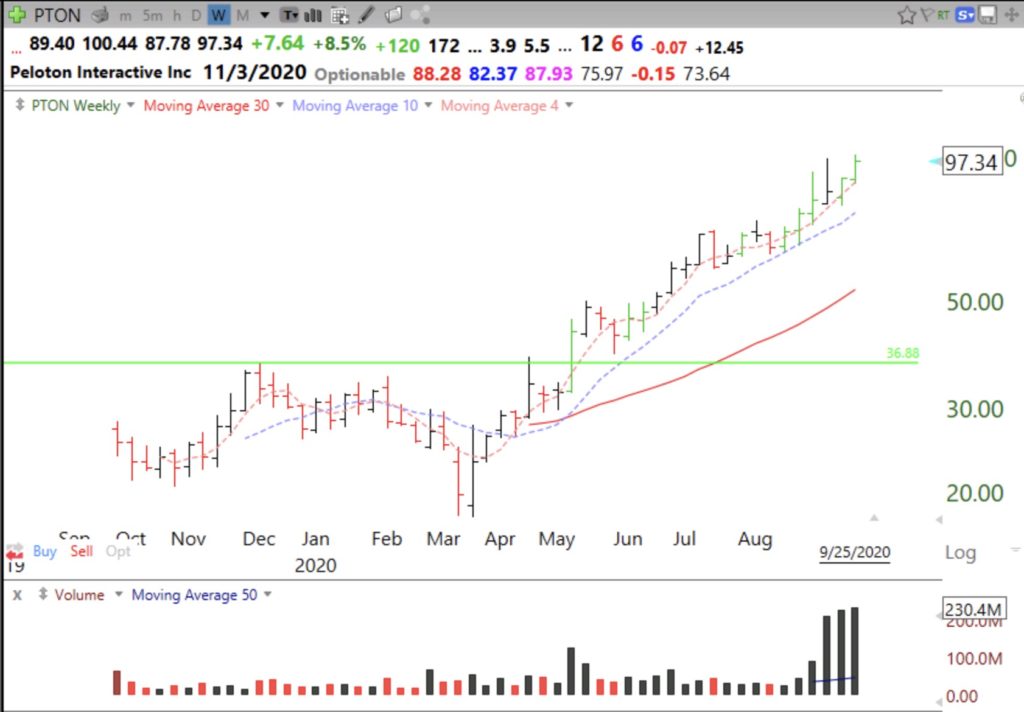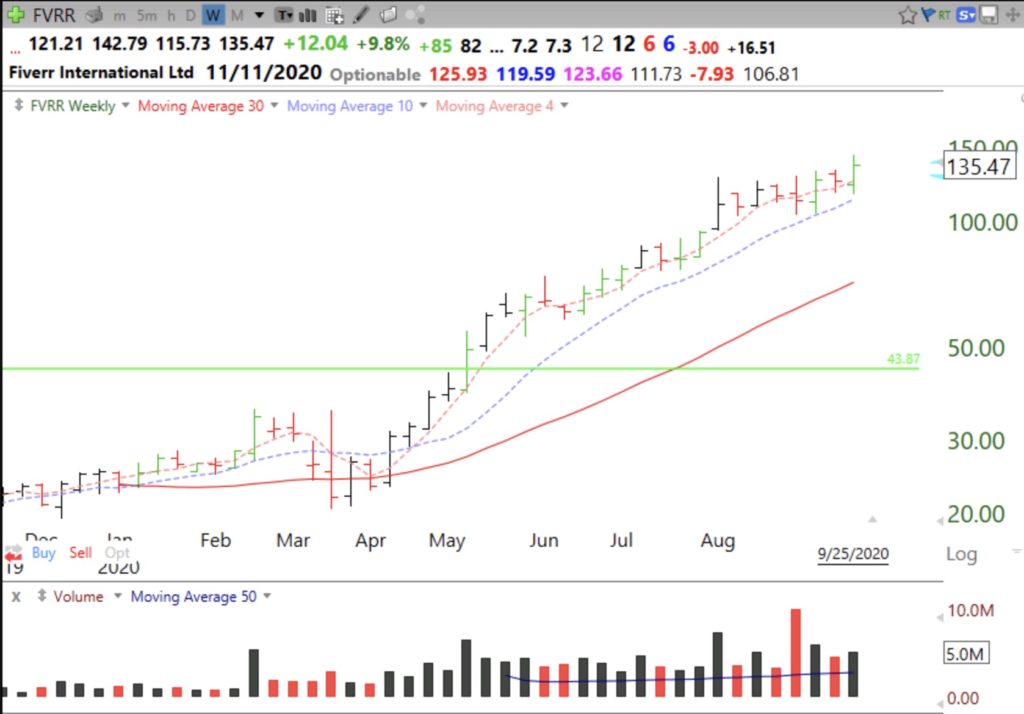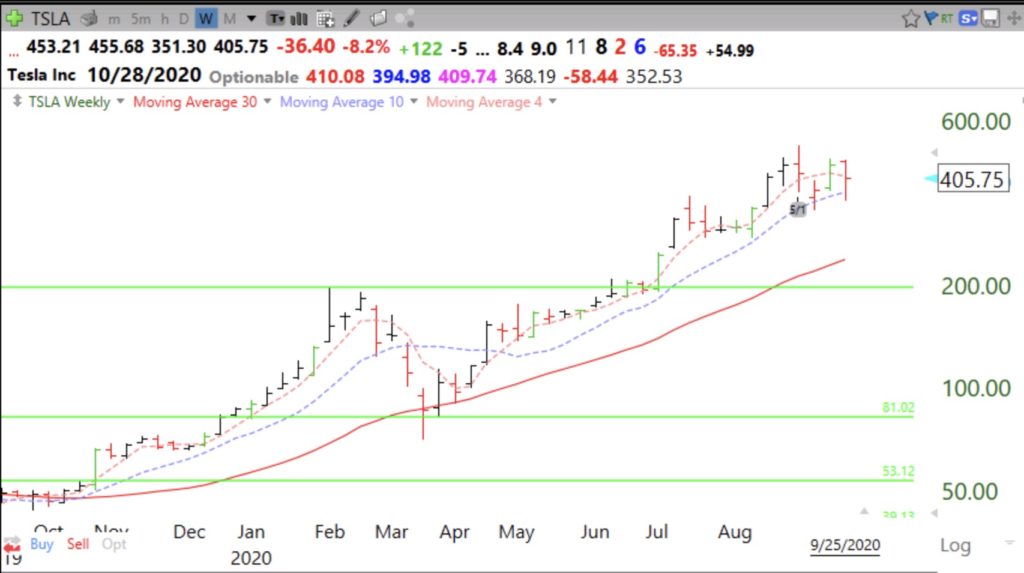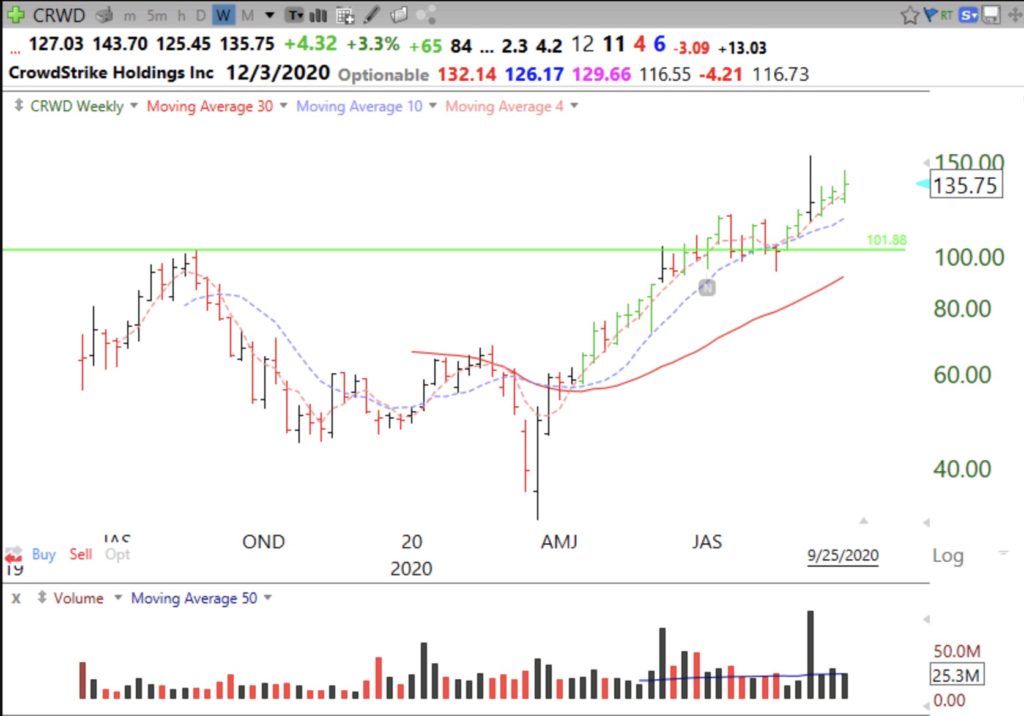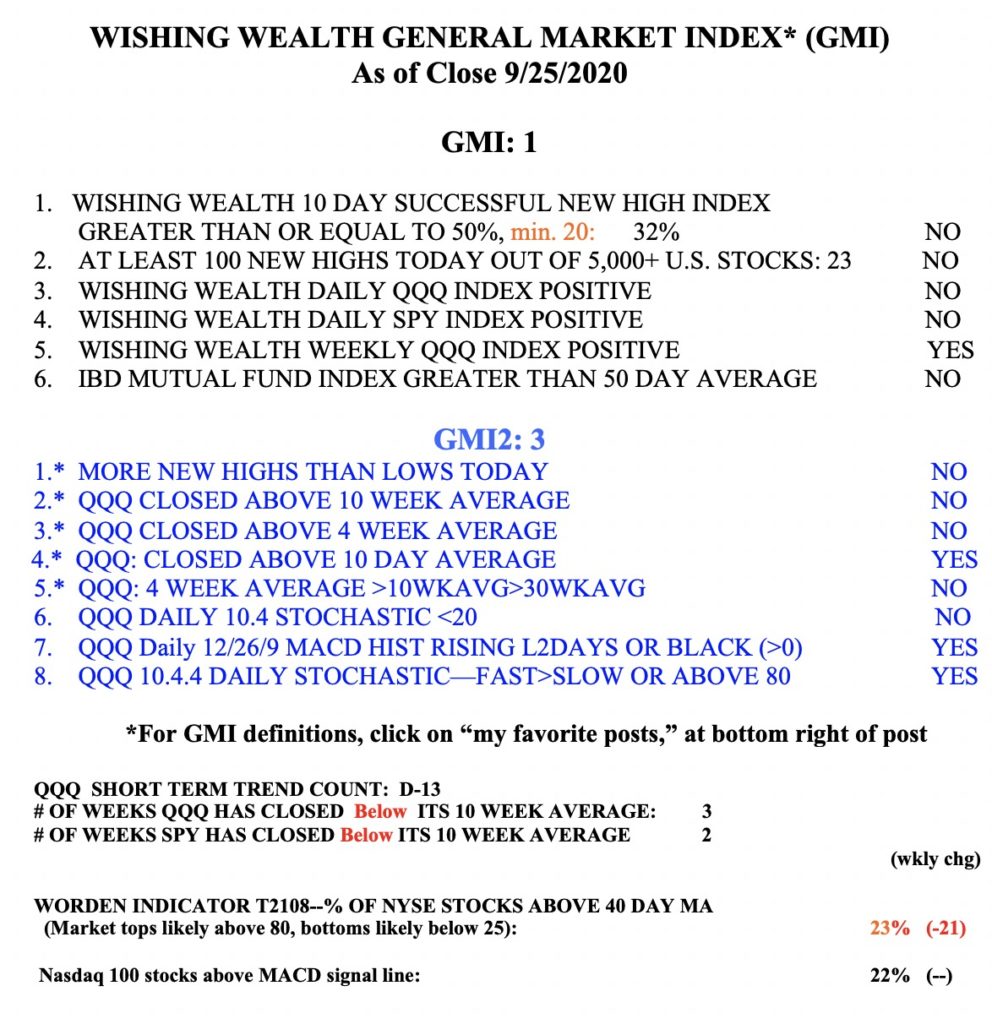If QQQ (dotted line) declines below all 12 GMMA averages, lowest is currently at 269.55, then it will be time to exit all positions. For now, I hold a few rockets like PTON, PINS and REGI. Note their beautiful weekly charts. All are above their last green line tops at all-time highs (ATH).
I discovered many of these stocks through social media tweets or my own TC2000 scans. However, I discovered this weekend an easier way to identify promising stocks using the new IBD screener. There is a wonderful youtube video posted by my talented student, Richard Moglen (@RichardMoglen), that shows how to use the IBD scanner and export stocks to a TC2000 watchlist for further analysis. I tried the screener this weekend and found that the screen I built came up with 36 stocks out of more than 7.000 that met the four conditions I specified. Amazingly, many of the stocks I have been following came up in my first screen! You need to learn IBD’s CAN SLIM approach to understand the importance of the search criteria. William O’Neil’s classic book (How to make money….) is posted lower on this page. It is required reading for my students. I began to make money in the market after reading it and getting O’Neil’s newspaper, IBD.
I ran a scan with 4 IBD conditions: RS 90-99, ACC/DIS = A or B, Price >30, Next Quarter EPS est >100%. This search yielded 36 names which I exported to Excel and imported into TC2000 to evaluate and monitor. I am going to assign the use of the IBD screener to my current class of 90+ undergraduates. They will select criteria to find stocks to trade in the virtual trading exercise and evaluate the results. Among the 36 stocks identified by the screen above are: APPS, CRWD, DDOG, DQ, ETSY, FSLY, LVGO, NFE, PINS, PTON, REGI, W, Z, ZM and ZS. You will recognize many of them as being leading rocket stocks. William O’Neil and David Ryan teach people to buy great stocks with proven or expected large earnings increases. Great earnings propel stocks higher. I now have a watch list in TC2000 so I can monitor these 36 and set alerts for the technical set-ups I use. How great is that!
While some stocks are doing quite well, the general market indexes are not. The GMI remains on a cautious Red signal and QQQ and SPY are below their critical 10 week averages and the daily RWB up-trend pattern did not develop for QQQ last week.

